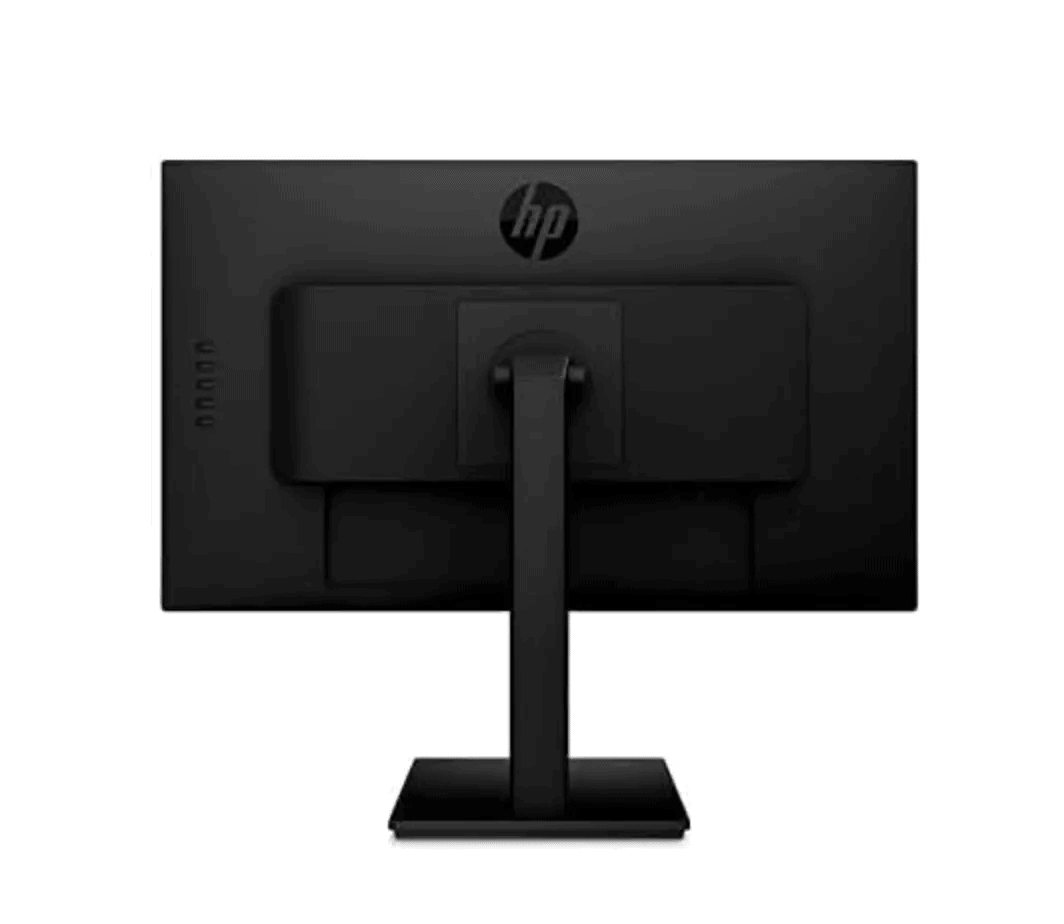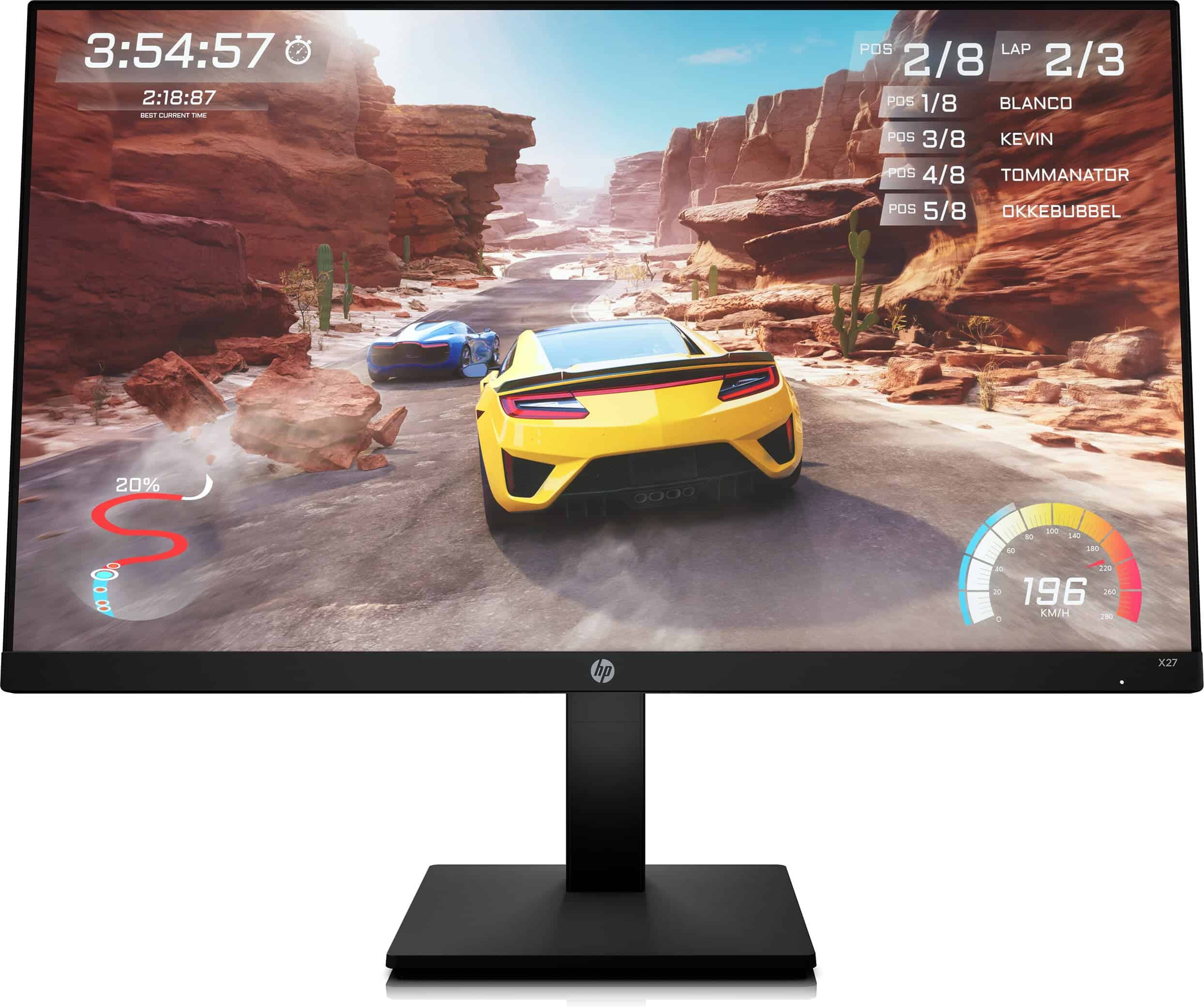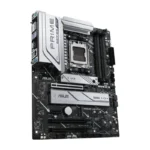The HP X27 FHD Gaming Monitor is a popular choice for gamers, but like any tech device, it can sometimes have issues. Fixing X27 monitor problems often involves simple steps like checking connections, updating drivers, or adjusting settings.
If your X27 isn’t working as expected, don’t worry. Many common problems have easy fixes you can try at home. From flickering screens to no display at all, we’ll cover troubleshooting tips to get your monitor back up and running.
Let’s look at some quick fixes for the X27. We’ll also explore when you might need to contact HP support for more help.
| Issue | Quick Fix |
|---|---|
| No display | Check power and cable connections |
| Flickering screen | Update graphics drivers |
| Color issues | Adjust monitor settings |
| Stuck pixels | Use pixel repair software |

Troubleshooting Your HP X27 FHD Gaming Monitor
The HP X27 FHD is a popular gaming monitor with a sleek design and impressive specs. But like any tech, it can sometimes run into problems. This guide will help you troubleshoot common issues and get back to gaming in no time.
Common Issues and Solutions
- No Power:
- Check the power cord connection to both the monitor and the wall outlet.
- Ensure the outlet is working by plugging in another device.
- Test with a different power cord if possible.
- No Signal:
- Make sure the video cable (HDMI or DisplayPort) is securely connected to both the monitor and your computer.
- Try a different video cable.
- Check your computer’s display settings to ensure it’s outputting to the correct port.
- Confirm your computer’s graphics drivers are up to date.
- Blurry or Distorted Image:
- Adjust the monitor’s resolution settings to match your computer’s output.
- Check the refresh rate settings and ensure they are compatible with your computer and the game you’re playing.
- Adjust the sharpness and contrast settings on the monitor.
- Dead Pixels:
- A few dead pixels are normal for LCD monitors. If you have a significant cluster or it’s bothersome, contact HP support.
- Backlight Bleed:
- Some backlight bleed is common with LCDs, especially in dark scenes. If it’s excessive, contact HP support.
- Flickering or Screen Tearing:
- Enable FreeSync or G-Sync if your graphics card supports it.
- Adjust the refresh rate in your game settings.
- Update your graphics drivers.
- Color Accuracy:
- Calibrate your monitor using a colorimeter for the most accurate colors.
- Adjust the color temperature and gamma settings in the monitor’s OSD (On-Screen Display) menu.
HP X27 FHD Specifications
| Feature | Specification |
|---|---|
| Panel Size | 27 inches |
| Resolution | 1920 x 1080 (Full HD) |
| Panel Type | IPS |
| Refresh Rate | 144Hz |
| Response Time | 1ms (MPRT) |
| Adaptive Sync | AMD FreeSync Premium |
| Brightness | 300 nits (typical) |
| Contrast Ratio | 1000:1 (static) |
| Viewing Angles | 178°/178° |
| Inputs | 1x DisplayPort 1.2, 2x HDMI 2.0 |
Utilizing the On-Screen Display (OSD)
The HP X27 FHD has an OSD menu that allows you to adjust various settings. You can access this menu using the buttons on the back or underside of the monitor. The OSD allows you to:
- Change brightness and contrast: Fine-tune the image to your preference.
- Adjust color settings: Modify color temperature, gamma, and individual color channels.
- Select input source: Switch between DisplayPort and HDMI.
- Enable FreeSync: Activate adaptive sync for smoother gameplay.
- Customize gaming features: Access features like crosshairs and timers.
- Reset to factory settings: Restore the monitor to its default settings.
By familiarizing yourself with the OSD, you can optimize your monitor’s performance and tailor it to your specific needs.
Understanding X27 Monitor Features
The HP X27 gaming monitor offers advanced features for an immersive experience. Its design focuses on performance and visual quality to enhance your gaming sessions.
Front and Rear Components
The HP X27’s front panel features a 27-inch IPS display with slim bezels. This design maximizes screen space and improves your field of view. The screen has an anti-glare coating to reduce reflections in bright environments.
A joystick control on the rear allows easy menu navigation. You’ll find power, DisplayPort, and HDMI ports on the back for connectivity. The stand offers height, tilt, and pivot adjustments for ergonomic comfort.
The monitor includes a low blue light mode to reduce eye strain during long gaming sessions. AMD FreeSync Premium technology helps eliminate screen tearing for smoother gameplay.
Monitor Specifications
The X27 boasts impressive specs tailored for gaming:
| Feature | Specification |
|---|---|
| Resolution | 1920 x 1080 (Full HD) |
| Refresh Rate | 165 Hz |
| Response Time | 1ms |
| Panel Type | IPS |
| Color Gamut | 99% sRGB |
Its 165 Hz refresh rate ensures fluid motion in fast-paced games. The 1ms response time minimizes ghosting and blur. The IPS panel provides wide viewing angles and accurate color reproduction.
The monitor supports HDR content for enhanced contrast and brightness. Its 99% sRGB color gamut delivers vibrant and accurate colors for both gaming and content creation.
DisplayPort and HDMI inputs allow connection to various devices. The X27 is compatible with gaming consoles for a versatile setup.
Safety and Maintenance
Proper safety measures and regular maintenance are crucial for the HP X27 monitor. These practices ensure optimal performance and longevity of your device.
Important Safety Information
Before using or servicing your HP X27 monitor, read the safety guidelines carefully. Disconnect the power cord from the source before opening the monitor to prevent component damage. Use electrostatic protection when replacing components.
Keep the monitor away from liquids and moisture. Avoid placing objects on top of the device. Use only HP-approved power adapters and cords.
Ensure proper ventilation around the monitor. Do not block air vents. Clean the screen with a soft, lint-free cloth and avoid using harsh chemicals.
Maintenance and Service Manual
The HP X27 maintenance and service manual provides detailed instructions for troubleshooting and repairs. It covers parts removal, replacement procedures, and diagnostic tests.
Professional service technicians should perform repairs in a repair center. The manual includes step-by-step guides for common issues and component replacements.
Regular cleaning and software updates help maintain optimal performance. Check for driver updates on HP’s website periodically.
Illustrated Parts Catalog
The illustrated parts catalog helps identify and order correct replacement components for your HP X27 monitor. It contains detailed diagrams and part numbers for easy reference.
To order parts:
- Locate the part number in the catalog
- Contact HP support or an authorized dealer
- Provide your monitor’s serial number
| Common Replacement Parts | Typical Lifespan |
|---|---|
| Power adapter | 3-5 years |
| Stand | 5-7 years |
| HDMI/DisplayPort cable | 7-10 years |
Always use genuine HP parts to ensure compatibility and maintain warranty coverage.
Troubleshooting and Repairs
The X27 monitor may encounter issues that require diagnostic tests and repairs. You can perform several troubleshooting steps to identify and resolve common problems. Some repairs involve removing and replacing parts or repairing connectors.
Diagnostic Tests and Problem Troubleshooting
Start by checking the power connection and cable connections. Ensure all cables are securely plugged in. If the screen is blank, try pressing the power button to wake the monitor from sleep mode.
Check the on-screen display (OSD) menu for picture settings. Adjust brightness and contrast if the image appears too dark or washed out. Use the auto-adjust function to optimize display settings.
Run the built-in test pattern to check for dead pixels or image issues. Access this through the OSD menu. If problems persist, try connecting the monitor to a different computer to isolate the issue.
Removal and Replacement Procedures
To access internal components, you’ll need to disassemble the monitor. Follow these steps:
- Unplug all cables and remove the stand
- Remove screws from the back panel
- Carefully separate the front bezel from the rear cover
- Disconnect internal cables as needed
Common replaceable parts include:
- LCD panel
- Power board
- Main board
- Speakers
Always use proper ESD protection when handling internal components. Reassemble in reverse order after replacing parts.
Connector and Power Board Repair
Audio connector repairs may require resoldering. Use a hot air gun to melt solder on pins. Gently push down with a soldering iron to remove the connector. Clean the area and resolder a new connector.
Power board issues often cause no power or intermittent power problems. Check for bulging or leaking capacitors. Replace the entire board if damaged components are found.
Test all repairs with a function test before reassembling the monitor. This ensures all connections are correct and the repaired components are working properly.
| Common Issue | Possible Cause | Solution |
|---|---|---|
| No power | Faulty power cord or board | Check connections, replace if needed |
| Blank screen | Sleep mode or cable issue | Wake monitor, check video cable |
| Color issues | Incorrect settings | Adjust OSD color settings |
| Dead pixels | LCD panel defect | Replace panel if under warranty |
Firmware and Software Updates
Keeping your X27 monitor’s firmware and software up-to-date is crucial for optimal performance and functionality. Regular updates can fix bugs, add new features, and improve compatibility.
Firmware Update Procedures
To update your X27 firmware, start by downloading the latest version from the Acer support website. Check your current firmware version in the monitor’s on-screen display menu.
Connect your X27 to your computer using a USB cable. Run the firmware update tool and follow the on-screen instructions. Do not disconnect the monitor or turn off your computer during the update process.
If you encounter issues, try these steps:
- Use a different USB port
- Disable antivirus software temporarily
- Perform a factory reset on the monitor
For persistent problems, contact Acer support for assistance.
| Update Type | Frequency | Benefits |
|---|---|---|
| Firmware | As needed | Bug fixes, new features |
| Drivers | Quarterly | Improved compatibility |
| Software | Monthly | Enhanced performance |
Remember to check for driver updates for your graphics card. These can improve your X27’s performance and resolve display issues.
Frequently Asked Questions
Monitor troubleshooting often involves addressing common issues like power problems, signal loss, image quality concerns, and resolution settings. These questions cover key areas to help you resolve typical monitor difficulties.
How can I address power issues in my Acer Predator monitor?
Check the power cable connections. Ensure it’s securely plugged into both the monitor and the wall outlet. Try a different power outlet to rule out electrical issues.
Press the power button firmly. Sometimes it may need extra pressure to activate. If the monitor still won’t turn on, unplug it for 30 seconds then plug it back in.
What steps can I take to reset a Dell monitor when it is not functioning correctly?
Perform a factory reset through the on-screen display menu. Look for options like “Reset to Factory Defaults” or “Reset All Settings”. This can resolve many software-related issues.
If you can’t access the menu, unplug the monitor for 60 seconds. Then reconnect and power it on. This hard reset can often clear temporary glitches.
What should I do if my monitor displays no signal or is intermittently losing connection?
Check your cable connections. Ensure they’re firmly seated in both the monitor and computer ports. Try a different cable to rule out a faulty one.
Verify your computer recognizes the monitor. Check display settings and try detecting displays. Restart your computer if needed.
How can I troubleshoot flickering or unstable images on my monitor screen?
Adjust the refresh rate in your display settings. A rate that’s too low can cause flickering. For most monitors, 60 Hz is standard.
Update your graphics drivers. Outdated drivers can cause display instability. Visit your graphics card manufacturer’s website for the latest version.
What are the common steps for diagnosing pixel anomalies or color issues in monitors?
Run a pixel test using online tools or built-in utilities. This can help identify dead or stuck pixels. Some monitors have self-repair functions for pixel issues.
Check color settings in your graphics control panel. Ensure color depth is set correctly. Calibrate your monitor using Windows’ built-in tool or third-party software.
How can I fix resolution or scaling problems with my monitor?
Adjust display resolution in your computer’s settings. Match it to your monitor’s native resolution for the best image quality. This information is often found in your monitor’s user manual.
Check scaling settings. Windows sometimes sets scaling above 100% by default. Adjust this if text or icons appear too large or small.
| Issue | Quick Fix |
|---|---|
| No power | Check connections, try different outlet |
| No signal | Verify cable connections, check computer settings |
| Flickering | Adjust refresh rate, update graphics drivers |
| Color issues | Run pixel test, calibrate monitor |
| Resolution problems | Set native resolution, adjust scaling |







